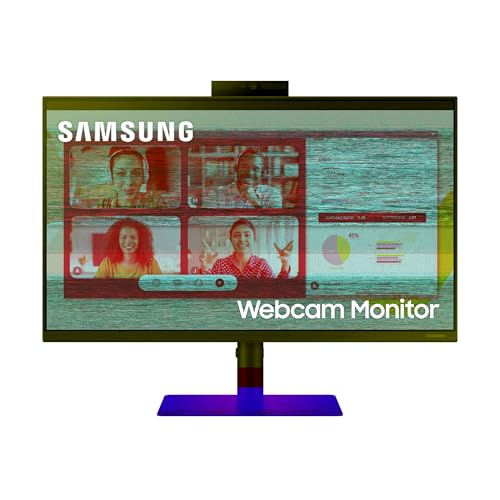Understanding 144 Hz Monitors: What It Means for You
What Does 144 Hz Mean?
When we talk about a 144 Hz monitor, we refer to its refresh rate, which measures how many times the screen refreshes the image per second. A refresh rate of 144 Hz means that the monitor can refresh the image 144 times within a second, resulting in smoother motion on the screen compared to monitors with lower refresh rates, like 60 Hz or 75 Hz. This increased smoothness is particularly noticeable during fast-moving scenes in videos or games, offering a more immersive viewing experience.
Why Does Refresh Rate Matter?
The refresh rate is crucial for activities that involve rapid movement, such as gaming or sports broadcasts. A higher refresh rate reduces motion blur and image tearing, making your overall viewing experience much more enjoyable. For gamers, a 144 Hz monitor helps in tracking fast-paced action seamlessly, providing a competitive edge where milliseconds can make a difference. This technology is particularly popular among serious gamers who partake in competitive gaming but can also enhance everyday tasks by providing a smoother visual experience for all computer use.
The Benefits of Upgrading to a 144 Hz Monitor
Enhanced Visual Experience
One of the most immediate benefits you’ll notice when upgrading to a 144 Hz monitor is the enhanced visual experience. Games and videos will appear less jittery and more fluid, and even regular desktop tasks will feel more responsive. Imagine scrolling through a webpage or flicking through a photo gallery; everything looks smoother and more engaging.
Improved Gaming Performance
For gamers, the transition to a 144 Hz monitor can significantly enhance performance. You’ll have greater clarity during fast action, making it easier to react and make split-second decisions. Games that require precise timing, such as first-person shooters and racing simulators, will feel vastly different and more enjoyable on a 144 Hz display.
Reduced Eye Strain
Another benefit is that a higher refresh rate can lead to reduced eye strain, particularly during marathon gaming sessions or long office hours. Smooth motion and reduced flicker mean your eyes won’t tire as easily, allowing you to enjoy extended use without discomfort. This can be especially important if you’re working long hours at your desk or indulging in weekend gaming.
Choosing the Right 144 Hz Monitor for Your Needs
Assess Your Primary Use
When selecting a 144 Hz monitor, begin by assessing how you plan to use it. Are you primarily gaming, using it for content creation, or simply watching movies? Each use case has different requirements which may influence your choice of size, resolution, and panel type.
Size and Resolution Matters
Monitor size and resolution are also critical components. A standard size for gaming is around 24 to 27 inches, offering a balance between visibility and immersion. Additionally, while 144 Hz monitors often come with Full HD (1920×1080) resolution, many higher-end models support Quad HD (2560×1440) or even 4K. If you want sharper images and greater detail, consider going for higher resolutions.
Panel Types Overview
Another factor is the type of panel. In general, there are three types of panels available: TN (Twisted Nematic), IPS (In-Plane Switching), and VA (Vertical Alignment). TN panels typically offer the fastest response times, making them popular with competitive gamers, while IPS panels provide richer colours and wider viewing angles, making them suitable for creative professionals and casual use. VA panels strike a balance between the two.
Key Features to Consider When Buying a 144 Hz Monitor
Connectivity Options
Consider the connectivity options available on the monitor. Check for HDMI 2.0 or DisplayPort support to maximize performance. Most modern graphics cards will not only support a 144 Hz refresh rate but also require compatible connections to deliver that performance.
Adaptive Sync Technology
Look for adaptive sync technology, like NVIDIA G-Sync or AMD FreeSync, to manage screen tearing and stuttering during gaming sessions. This feature syncs the monitor’s refresh rate with the graphics card’s frame rate, resulting in even smoother visuals.
Response Time and Input Lag
Pay attention to response time, which indicates how quickly pixels on the screen can change colours. Ideally, a response time of 1ms to 3ms is ideal for gaming, as it reduces ghosting effects. Input lag is also critical; lower input lag means more responsive controls, which is crucial in fast-paced games.
Setting Up Your 144 Hz Monitor for Optimal Performance
Using the Right Cables
To fully take advantage of your monitor’s capabilities, ensure you’re using the correct cables. Simply connecting your monitor doesn’t guarantee it will perform at 144 Hz; you need to use HDMI 2.0 or DisplayPort cables that can support the higher refresh rates.
Adjusting Display Settings
Once your monitor is connected, you may need to adjust settings in your operating system or your graphics card control panel. Ensure the refresh rate is set to 144 Hz; sometimes, it defaults to a lower value upon initial setup. This may involve checking your display settings on Windows or using software provided by GPU manufacturers.
Calibrating for Comfort
Finally, don’t forget to calibrate your monitor for comfort. Adjust brightness settings, contrast, and colour temperature to suit your preferences and reduce eye strain. Finding the perfect balance will enhance your experience whether you’re gaming, working, or watching content.























